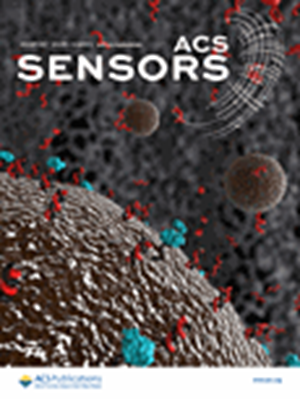Plasmonic Biosensors for Health Monitoring: Inflammation Biomarker Detection
IF 8.2
1区 化学
Q1 CHEMISTRY, ANALYTICAL
引用次数: 0
Abstract
Surface plasmon resonance (SPR) and localized SPR (LSPR) biosensors have emerged as viable technologies in the clinical detection of biomarkers for a wide array of health conditions. The success of SPR biosensors lies in their ability to monitor in real-time label-free biomarkers in complex biofluids. Recent breakthroughs in nanotechnology and surface chemistry have significantly improved this feature, notably from the incorporation of advanced nanomaterials including gold nanoparticles, graphene, and carbon nanotubes providing better SPR sensor performance in terms of detection limits, stability, and specificity. Recent progress in microfluidic integration has enabled SPR biosensors to detect multiple biomarkers simultaneously in complex biological samples. Taken together, these advances are closing the gap for their use in clinical diagnostics and point-of-care (POC) applications. While broadly applicable, the latest advancements in plasmonic biosensing are overviewed using inflammation biomarkers C-reactive protein (CRP), interleukins (ILs), tumor necrosis factor-α (TNF-α), procalcitonin (PCT), ferritin, and fibrinogen for a series of conditions, including cardiovascular diseases, autoimmune disorders, infections, and sepsis, as a key example of plasmonic biosensors for clinical applications. We highlight developments in sensor design, nanomaterial integration, surface functionalization, and multiplexing and provide a look forward to clinical applications by assessing the current limitations and exploring future directions for translating SPR biosensors for diagnostics and health monitoring. By enhancement of diagnostic accuracy, reproducibility, and accessibility, particularly in POC settings, SPR biosensors have the potential to significantly contribute to personalized healthcare and bring real-time, high-precision diagnostics to the forefront of clinical practice.

求助全文
约1分钟内获得全文
求助全文
来源期刊

ACS Sensors
Chemical Engineering-Bioengineering
CiteScore
14.50
自引率
3.40%
发文量
372
期刊介绍:
ACS Sensors is a peer-reviewed research journal that focuses on the dissemination of new and original knowledge in the field of sensor science, particularly those that selectively sense chemical or biological species or processes. The journal covers a broad range of topics, including but not limited to biosensors, chemical sensors, gas sensors, intracellular sensors, single molecule sensors, cell chips, and microfluidic devices. It aims to publish articles that address conceptual advances in sensing technology applicable to various types of analytes or application papers that report on the use of existing sensing concepts in new ways or for new analytes.
 求助内容:
求助内容: 应助结果提醒方式:
应助结果提醒方式:


